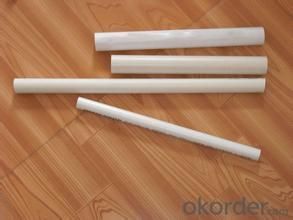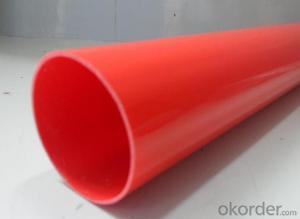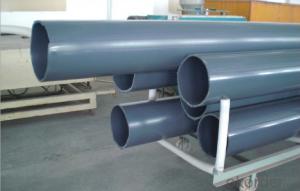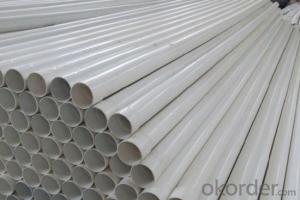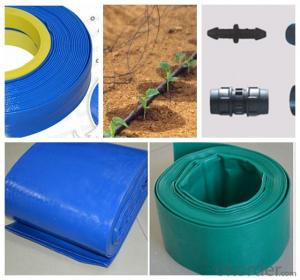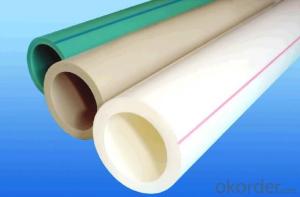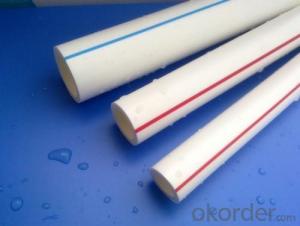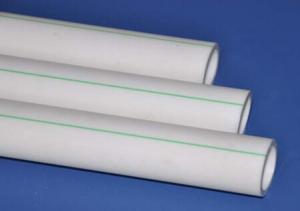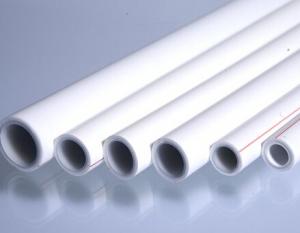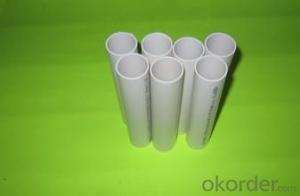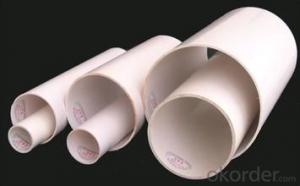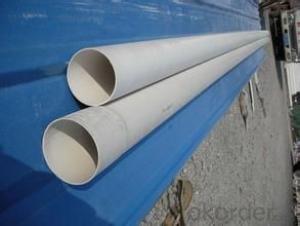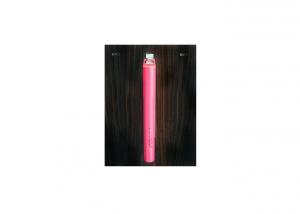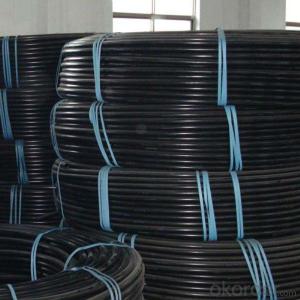Plastic Tubes PVC Pipe Wall Thickness:1.6mm-26.7mm Specification
- Loading Port:
- China main port
- Payment Terms:
- TT OR LC
- Min Order Qty:
- 999 pc
- Supply Capability:
- 9999 pc/month
OKorder Service Pledge
OKorder Financial Service
You Might Also Like
1. Description of PVC Pipe :
Material: Virgin Rigid PVC resin, no recycle material
Process: vacuum forming extrusion
Color: various colors, we can make color according to Panton card No.
Back working procedure: precise length cutting, drilling/slotting/punching, gold stamping, quality inspection, cleaning, assembling, and packing.
Application:construction, home decoration, stationery&toy, advertising, ornament, etc.
2.Features of pvc pipes :
1) Structure Engineering, home water supply and drainage
2) Water drainage/supply system
3) for Agriculture Irrigation, aquaculture
4) Strong mechanical strength: Good resistance to water pressure, outside impact and pressure, is satisfied under any conditions.
5) Good electrical insulation: excellent insulation nature against electricity. the pvc pipe can be served as conduits and pipes in construction cable and wire.
6) Simple installation: Very easy to connect, thus much time and laborcost may be saved.
3.PVC Pipe Images:
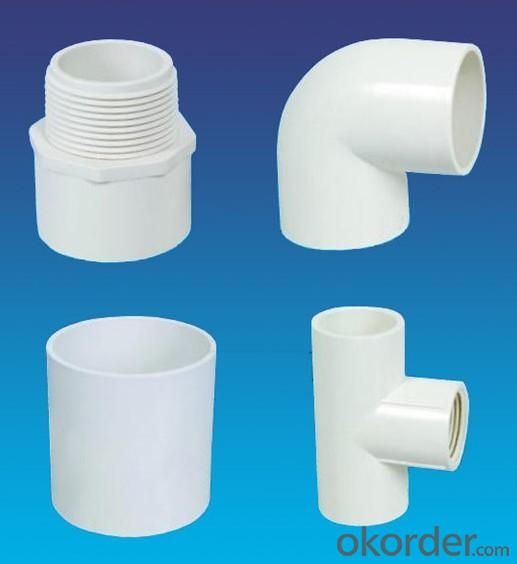
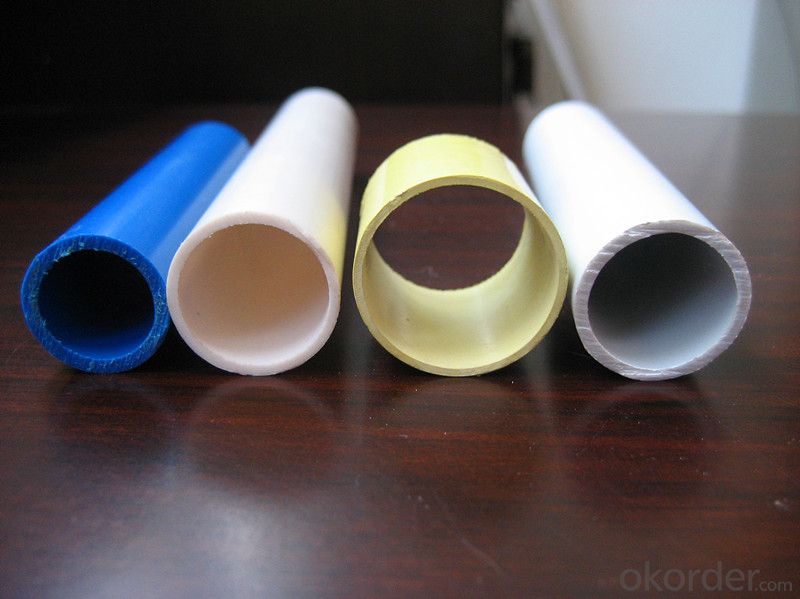
4.Specifications of the pvc pipe:
1) Material: pvc pipe unplasticized polyvinyl chloride
2) Standard: GB, ISO9001, ISO14001
3) Color: white pvc pipe, grey pvc pipe , etc.
4) Specific Gravity:g/cm3, 20(C): 1.35 - 1.55
5) Vicat Softening Temperature: (C) >=79
6) Longitudinal Reversion: %, 150(C) <=5< span=""><>
7) Dichloromethane Resistance Test: No attack
8) Falling Weight Impact Test: TIR, %, 0(C) <=10< span=""><>
9) Tensile Yield Strength: Mpa >=40
10) Fitness of Water Tightness Test: No Leakage
11) Fitness of Air Tightness Test: No Leakage
5.FAQ
Q:What is you MOQ?
A:As customer’s request.
Q:What is the production ability? or delivery time?
A:Our production ability support 40HQ order finish in one week.
Q:What is the regular shipping port?
A:Tianjin or Shanghai.
Q:What is your payment?
A:TT or CC.
Q:Can we have sample?
A:Sample free, freight cost you.
Q:For urgently doubts,who online?
A:Sales and marketing Manager 24hours online service.
- Q: How do plastic tubes compare to PVC pipes in terms of flexibility?
- Plastic tubes generally offer more flexibility compared to PVC pipes. While PVC pipes are rigid and not easily bendable, plastic tubes are designed to be pliable and can be easily manipulated or bent to accommodate various installation requirements.
- Q: Are plastic tubes available in flame-retardant options?
- Yes, plastic tubes are available in flame-retardant options. These tubes are specifically designed to reduce the spread of fire and meet certain safety standards.
- Q: I have a Katadyn Vario pump for camping and haven't used it in eons (7 years or so) and I took it apart to clean it.For now, and for future reference, how can I clean the actual intake/outlet plastic tubes? The inlet tube is inserted into gross pond/lake or running stream water, so it's already contaminated. I would love to be able to wash this tube for SURE, safely at home.(The O-rings are still well-lubed, and I've ordered new activated carbon to refill the glass fiber filter.)
- Use a weak chlorine bleach solution.
- Q: Can plastic tubes be used for pneumatic conveyance?
- Yes, plastic tubes can be used for pneumatic conveyance.
- Q: Are plastic tubes suitable for industrial automation?
- Yes, plastic tubes are suitable for industrial automation. Plastic tubes offer numerous benefits such as being lightweight, flexible, and resistant to corrosion, chemicals, and high temperatures. They are also cost-effective and can be easily integrated into automated systems. Additionally, plastic tubes offer excellent performance in various applications like pneumatic and hydraulic systems, conveying fluids, and protecting wires and cables.
- Q: How to calculate joint parts for hot melt connection of water supply plastic pipe?
- Calculate the joint, you have to draw a sketch, and then point out how many joints.
- Q: if possible list the items , i allready have a plastic tube to use
- I'm okorder
- Q: Would exsanguination happen? Say the plastic tube is inserted and then left ignored. Blood flows out through the tube.Would the blood clot in the tube? Would the vein involved constrict and cut off flow? Would the patient die?
- If the tubing was a large bore / gauge / diameter, and the venous pressure remained elevated, then yes someone could be exsanguinated in this manner. Venous pressure would be maintained if the open vein was closer to the ground than the rest of the body (eg. arm hanging down or lying head-down with iv in neck).
- Q: Are plastic tubes suitable for use in the aerospace industry?
- No, plastic tubes are generally not suitable for use in the aerospace industry due to their limited strength, temperature resistance, and ability to withstand high pressures and extreme conditions.
- Q: When a mechanic wants to empty a gasoline tank of a car,he fills a plastic tube with gasoline,dips one end of the tube into the gasoline in the tank,and puts the one end at a empty drum lower than the gasoline tank of the car.Why does this technique work?
- It will work if only half the tube is filled so a column of air will be trapped between both ends. As the gasoline in the tube flows out of the tube, it pulls the column of air between gasoline and the other end inserted into the tank creating a suction effect. The empty barrel has to be lower because as gasoline inside the tank is drawn into the tube, gravity has to take over to make the gasoline flow downward.
Send your message to us
Plastic Tubes PVC Pipe Wall Thickness:1.6mm-26.7mm Specification
- Loading Port:
- China main port
- Payment Terms:
- TT OR LC
- Min Order Qty:
- 999 pc
- Supply Capability:
- 9999 pc/month
OKorder Service Pledge
OKorder Financial Service
Similar products
Hot products
Hot Searches
Related keywords



